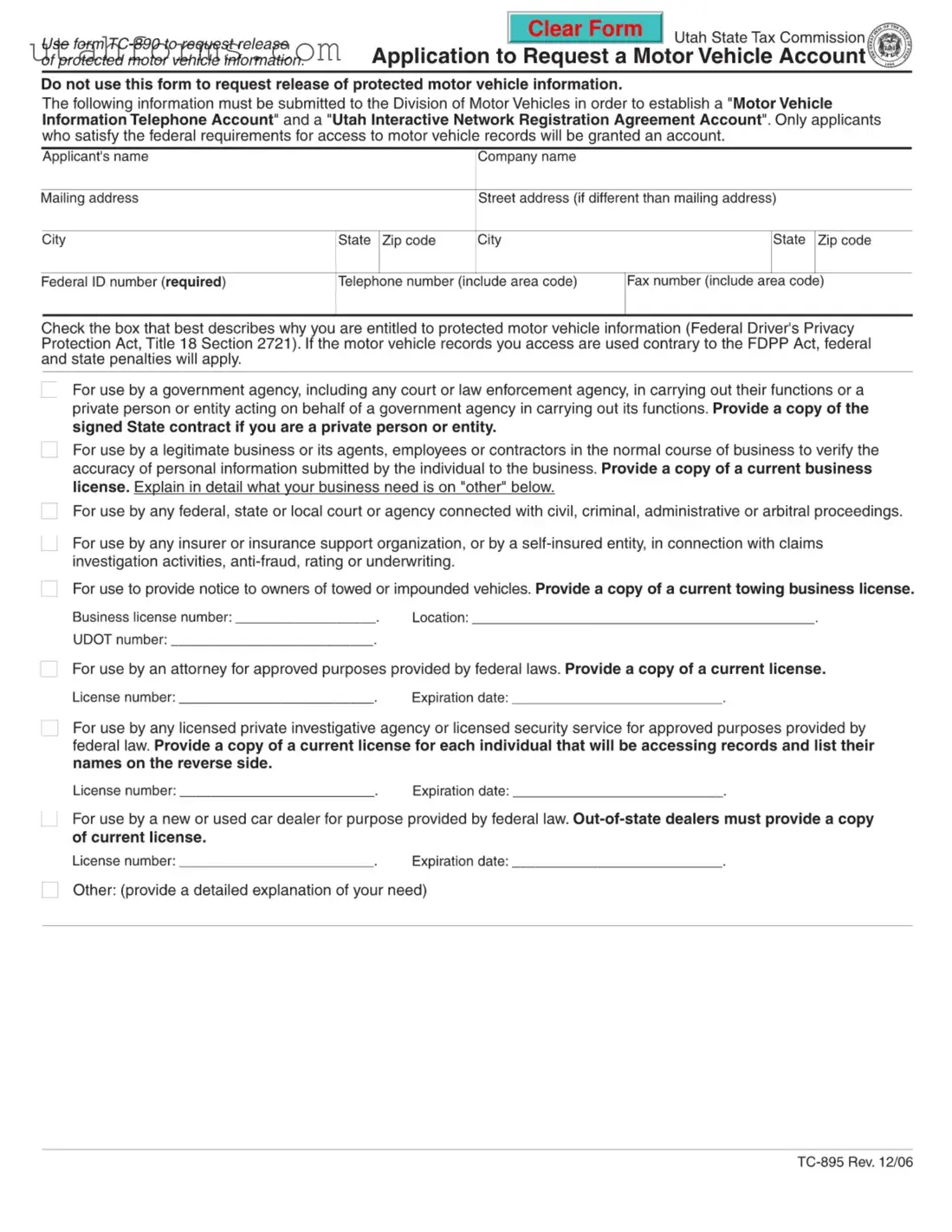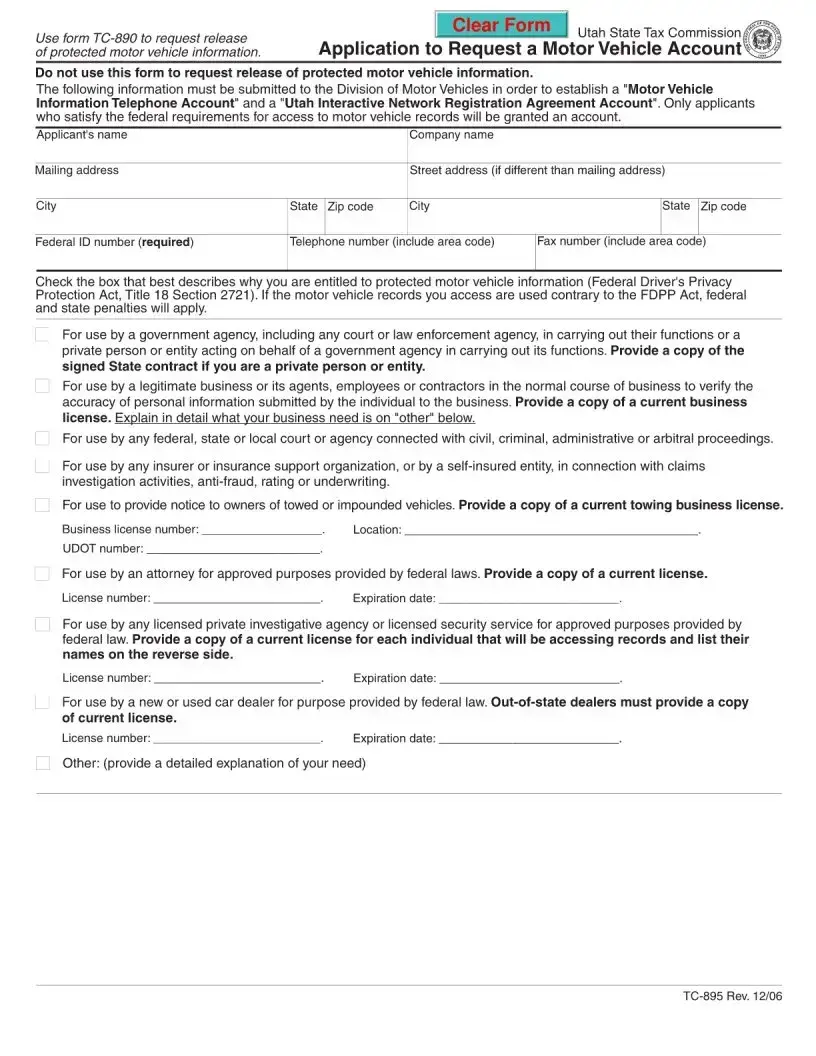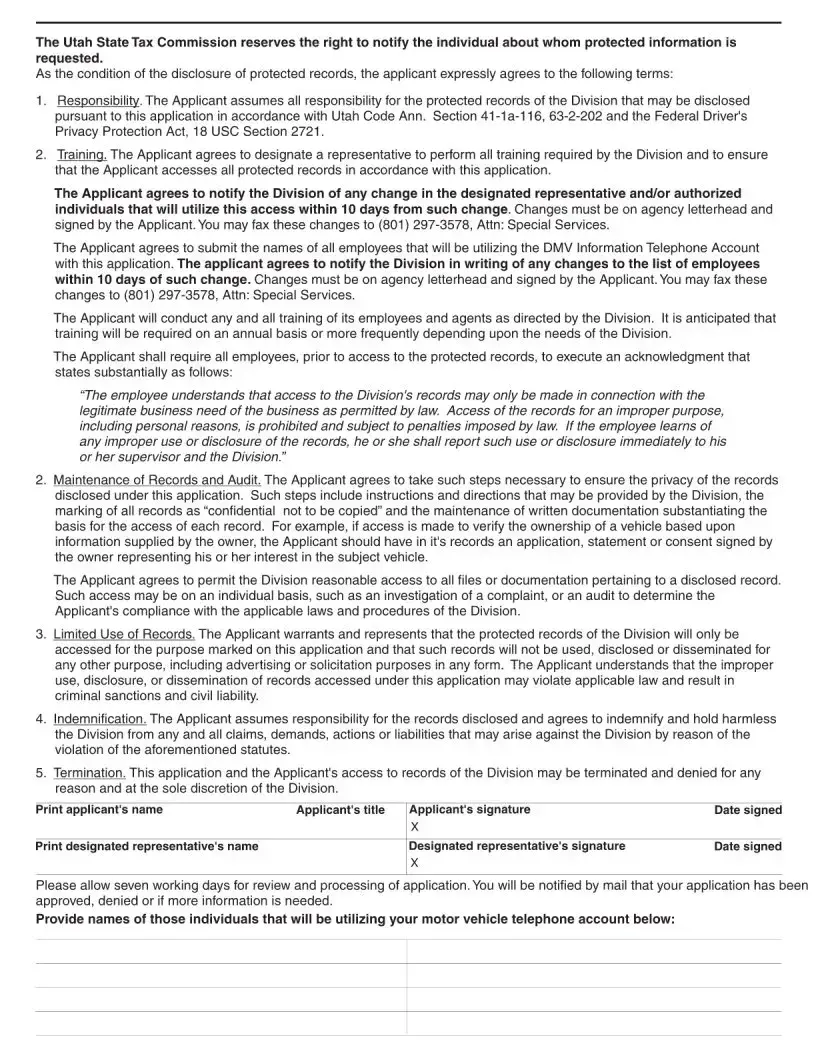The Utah TC-895 form, utilized in the process of transferring ownership of a motor vehicle, bears similarities to various other documents required for legal or logistical purposes within different jurisdictions. One such document is the Vehicle/Vessel Transfer and Reassignment Form (REG 262) in California. This form, like the Utah TC-895, is crucial for properly documenting the transaction and transfer of ownership of a vehicle or boat. Both forms gather detailed information about the seller, the buyer, the vehicle, and ensure all required endorsements are captured to finalize the transfer, emphasizing legal compliance and the protection of all parties involved.
Similarly, the Bill of Sale form, widely used across different states, mirrors the function and objectives of the Utah TC-895 form. While the Bill of Sale is more versatile, applying to a range of personal property transactions beyond vehicles, it shares the core purpose of recording a transaction between a seller and a buyer, detailing the item sold, the sale amount, and the date of sale. This resemblance underscores their collective role in substantiating the terms of personal property sales, securing a legal basis for transferring ownership.
Another document akin to the Utah TC-895 form is the Texas Certificate of Title (Form 130-U). This form is central to the process of transferring vehicle ownership in Texas, encompassing sections for detailed information about the vehicle, the seller, and the buyer, similar to the Utah form. Both documents necessitate official endorsements from all parties involved and facilitate the legal transfer of the title, acting as a governmental record-keeping tool designed to prevent fraudulent transactions and ensure clear vehicle ownership.
The Notice of Transfer and Release of Liability (NRL) form, used in several states, shares objectives with the Utah TC-895 form, though it focuses on an aspect of the vehicle sale process. The NRL is submitted to the state’s department of motor vehicles to officially report the change of ownership and release the seller from future liability related to the vehicle. While concentrating on post-sale obligations, it complements the Utah TC-895 by playing a critical role in the transfer process, ensuring that the seller's responsibility ends with the sale, similar to how the TC-895 completes the legal transfer formalities.


